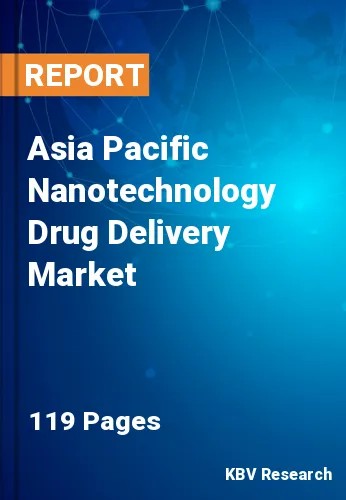The Asia Pacific Nanotechnology Drug Delivery Market would witness market growth of 9.6% CAGR during the forecast period (2023-2030).
Personalized medicine, tailoring treatments to individual patient characteristics, has gained prominence recently. Nanotechnology facilitates the realization of personalized medicine by offering customizable drug delivery systems. The tunable properties of nanoparticles allow for the adjustment of factors such as size, surface charge, and drug release kinetics to match the specific requirements of each patient. This individualized approach holds great potential for optimizing treatment outcomes and minimizing adverse effects.
Nanotechnology has revolutionized cancer therapy by offering multifaceted solutions. Nanoparticles can be designed to passively target tumor tissues through the enhanced permeability and retention (EPR) effect, exploiting the leaky vasculature characteristic of tumors. Moreover, the blood-brain barrier (BBB) poses a significant challenge in treating neurological disorders, limiting the entry of therapeutic agents into the brain. Nanotechnology offers innovative solutions to overcome this barrier and deliver drugs to the central nervous system. Nanoparticles can be engineered to traverse the BBB through various mechanisms, including receptor-mediated transcytosis and encapsulation in carriers designed to exploit endogenous transport mechanisms.
Cancer incidence in India has increased significantly in recent years, with environmental factors, lifestyle modifications, and an aging population all playing a role. China has been experiencing an increase in neurological cases, including conditions such as Alzheimer's disease, Parkinson's disease, and various neurological disorders. The rising prevalence of these conditions has created a demand for innovative and targeted drug delivery solutions, and nanotechnology has emerged as a promising avenue for addressing the challenges associated with neurological treatments. As per the data released in 2022 by the Shanghai Municipal People's Government, there are about 10 million people with Alzheimer's disease in China. With the rising aging population, the figure is expected to surpass 30 million in 2050. Thus, the growing number of cancer and Alzheimer's disease cases in Asia Pacific will help in the growth of the regional market.
The China market dominated the Asia Pacific Nanotechnology Drug Delivery Market, by Country in 2022, and would continue to be a dominant market till 2030; thereby, achieving a market value of $9,244 Million by 2030. The Japan market is registering a CAGR of 8.9% during (2023 - 2030). Additionally, The India market would showcase a CAGR of 10.3% during (2023 - 2030).
Free Valuable Insights: The Global Nanotechnology Drug Delivery Market is Predict to reach $ 153 Billion by 2030, at a CAGR of 8.7%
Based on Formulation, the market is segmented into Polymer-Based Nanomedicine, Lipid-Based Nanomedicine, Nanocrystals, and Others. Based on Application, the market is segmented into Oncology & Hematology, Infectious Diseases, Orthopedics, Neurology, Immunology, Urology, and Others. Based on countries, the market is segmented into China, Japan, India, South Korea, Singapore, Malaysia, and Rest of Asia Pacific.
By Formulation
By Application
By Country
Our team of dedicated experts can provide you with attractive expansion opportunities for your business.

